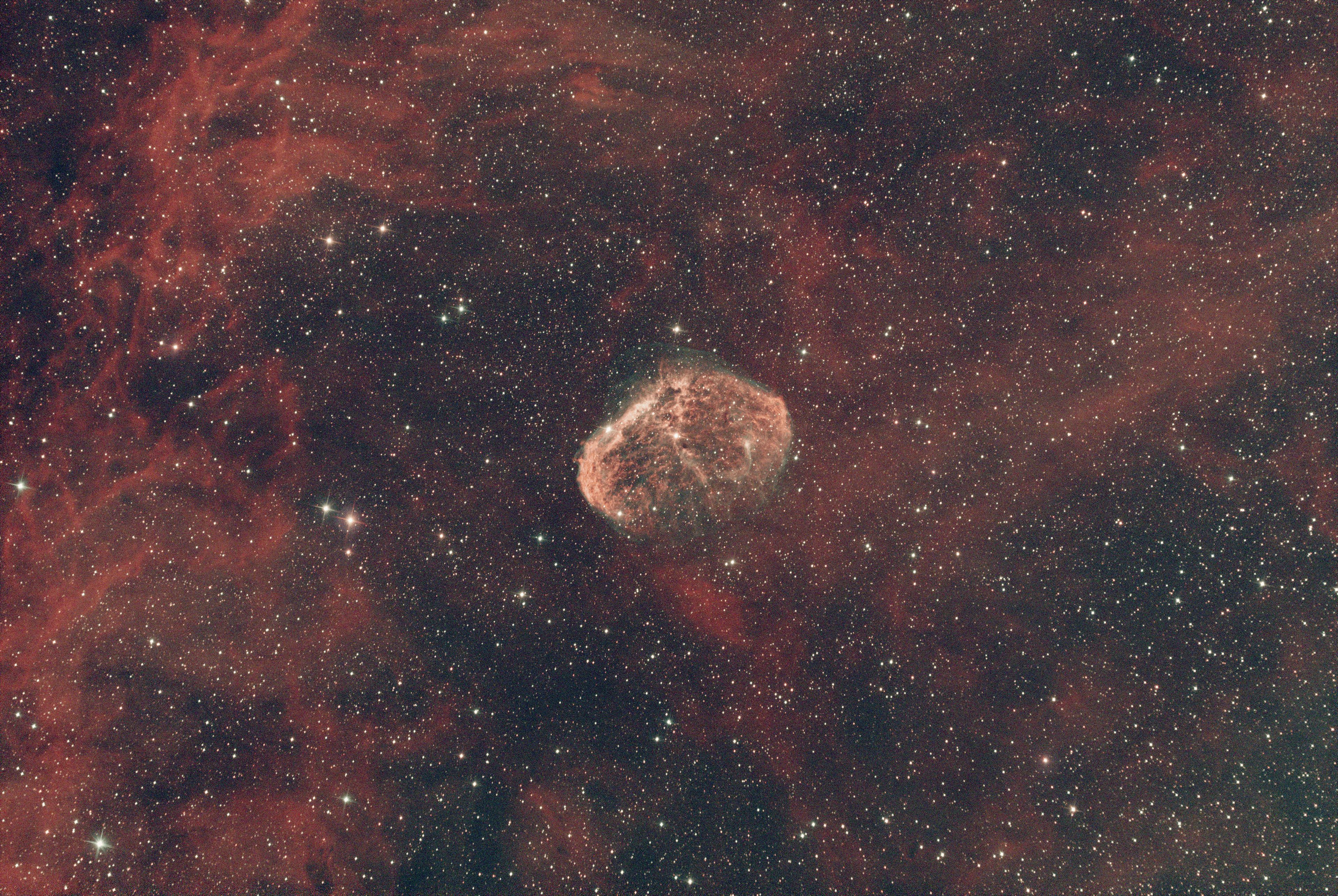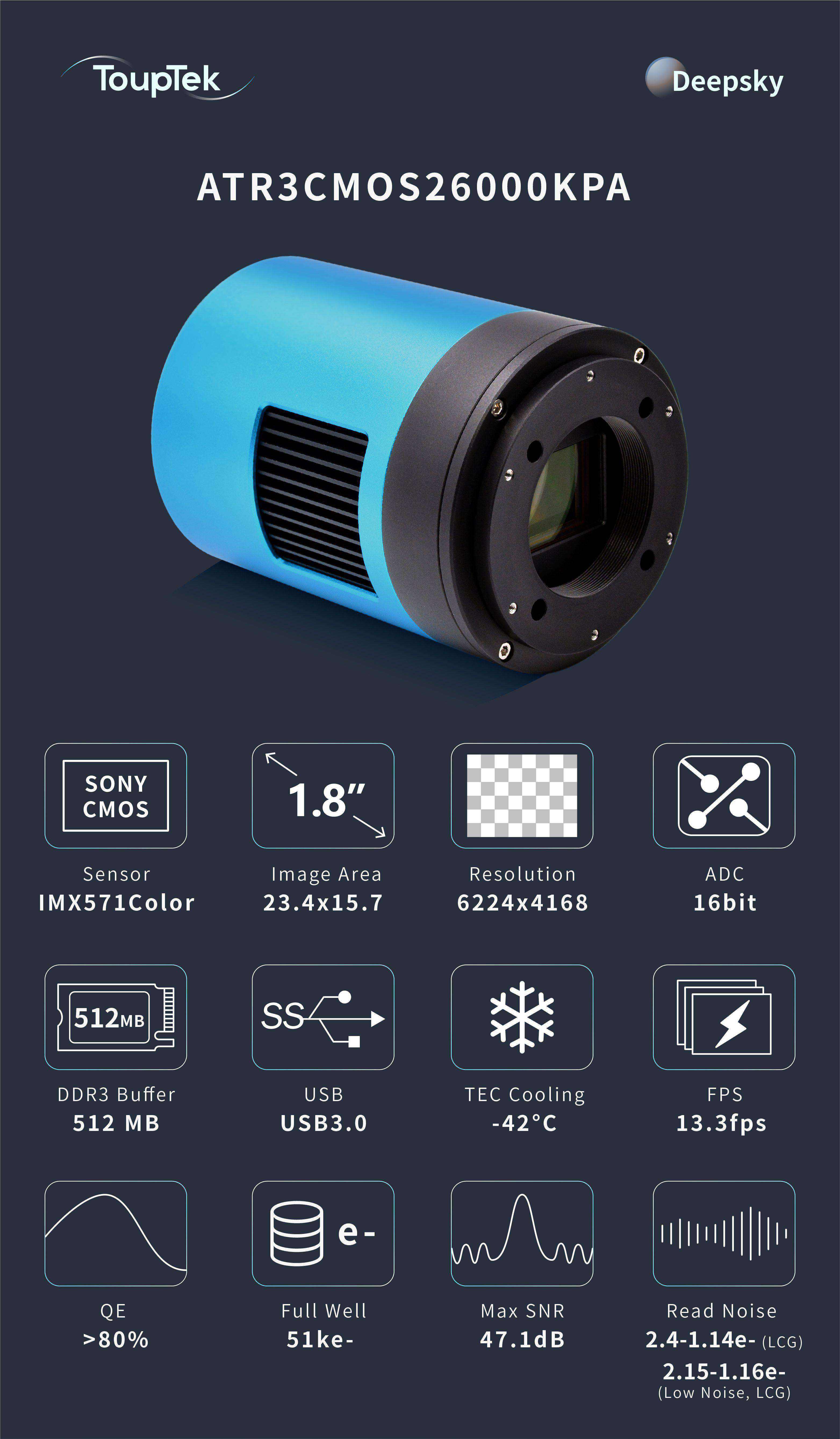Nestled in the rich tapestry of our Milky Way galaxy lies an object of considerable intrigue and beauty – the Crescent Nebula, also known as NGC 6888. This celestial marvel is an emission nebula located about 5,000 light-years away in the constellation Cygnus. A testament to the life cycle of stars, NGC 6888 offers an awe-inspiring view of stellar evolution and the profound forces at play within our galaxy. Join us as we delve into the cosmic mystery of the Crescent Nebula.
NGC 6888 owes its existence to the fierce and tumultuous winds of a massive star known as WR 136, a Wolf-Rayet star at the nebula's core. This type of star signifies an advanced stage in a high-mass star's life, where intense winds are expelled at incredible speeds, colliding with the slower-moving material ejected during the star's earlier red giant phase. The result is the formation of the Crescent Nebula's distinct, shell-like structure, illuminated by the powerful radiation of WR 136.

photographer:旅行者
camera:ToupTek ATR3CMOS26000KPA
telescope:Skywatcher 150P/F5
Equatorial mount:UMi 17 Harmonic Equatorial Mount
Wolf-Rayet stars like WR 136 are rare and fascinating stellar entities. They are characterized by an exceptionally strong stellar wind and the presence of heavy elements in their spectra. These massive stars have consumed their core hydrogen and now burn heavier elements, resulting in substantial mass loss. Their fierce winds contribute significantly to the chemical enrichment of the interstellar medium.
NGC 6888's iconic crescent shape is not merely an aesthetic wonder; it holds valuable clues about the dynamics of stellar winds and nebular construction. When observed through a telescope, the nebula presents sweeping arcs of glowing gas, primarily hydrogen and oxygen, with intricate filaments and cavities sculpted by the interaction between the star's winds and the surrounding interstellar material.
Astrophotographers aiming to capture the nuances of the Crescent Nebula require long exposure techniques and specialized filters to reveal the full extent of its beauty. The Nebula responds well to narrow-band imaging, where the Ha (hydrogen-alpha), OIII (doubly ionized oxygen), and SII (singly ionized sulfur) filters can be employed to isolate specific wavelengths of light emitted by the gases and construct a detailed and striking image.
For amateur astronomers hoping to observe the Crescent Nebula, summer months offer the best viewing opportunities as Cygnus rises high in the night sky. While NGC 6888 is not visible to the naked eye, a small to medium-sized telescope equipped with an OIII filter can help discern the nebula's form and capture its subtle glow against the backdrop of stars.

ToupTek ATR3CMOS26000KPA
The Crescent Nebula – NGC 6888 – continues to mesmerize observers and researchers alike, providing a window into the waning stages of a star's life. Its captivating structure and dynamic forces at play make it a visual feast and a compelling subject for ongoing astrophysical research. As we cast our gaze upon the graceful curve of the Crescent Nebula, we are reminded of the celestial choreography that shapes the heavens and the enduring legacy of stars long after their light has faded.